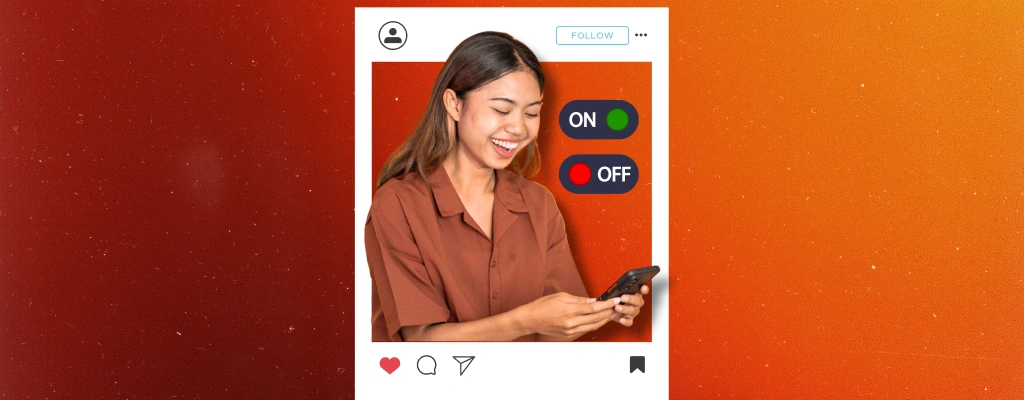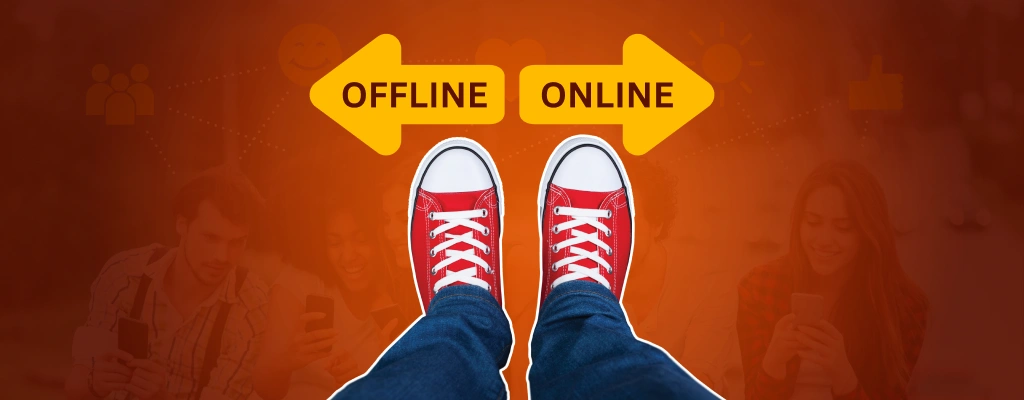With the ubiquitous nature of social media, most of us inevitably check our Facebook or Instagram accounts religiously. It’s practically normal to incorporate social media into our daily routines. But while scrolling on your favorite app, do you ever think, “how much time do people spend on social media?”
While fascinating, this could be a bit concerning since social media users come from different demographics. Some age groups spend more time on these platforms than others, affecting various aspects of their lives like mental health.
With popular apps like Facebook, Instagram, X, YouTube, and TikTok dominating the internet, the impact of social media on our daily lives can’t be understated. But what are the costs of spending too much time on social media, and how can we prevent these negative consequences?
In Numbers: Social Media Usage

While it can be overwhelming to grasp how much time people spend on social media, global statistics can shed light on social media usage across various demographics.
To put things into perspective, let’s first answer: how many people are on social media?
Currently, there are 5.07 billion social media users, accounting for 62.6% of the global population. That’s more than half of the world’s populace!
As of 2024, a typical social media user spends an average of 2 ½ hours on social media platforms. That means 35.8% of our daily online activities are spent on these apps.
Now, let’s do a quick computation.
With 150 minutes spent by each user, the world devotes around 760 million minutes daily to scrolling and posting on social media. To better understand these numbers, let’s break them down and compare social media usage by age, gender, and region.
Social Media Usage By Age Groups
It’s no surprise that social media usage varies across different age groups. According to a 2024 research, millennials (aged 28 to 42), spend the most time on social media. In the United States alone, 68.8 million millennials use social media followed by Gen Z (aged 12 to 27), with 60.7 million users.
Despite millennials being the most active on social media, 35% of Gen Z also use social media more than two hours a day.
Meanwhile, Gen X (aged 44 to 59) ranks third on the list with approximately 51.2 million users. Lastly, baby boomers (aged 60 to 78) rank last with around 36.4 million users, respectively.
Social Media Usage By Gender
Studies have also shown disparities in social media usage among genders. Results show that 53.4% of the global population using social media is male, while 46.6% are female.
Despite these numbers, it was found that females still spend more time on social media platforms, regardless of their age. Here’s a quick rundown of the key findings:
- Female users between 16 and 24 years old spend an average of two hours and 56 minutes on social media daily, while their male counterparts spend only two hours and 32 minutes.
- Female users aged 25 to 34 spend two hours and 45 minutes on social media apps daily, while male users in the same age bracket spend just under two and a half hours.
- In the 45 to 54 years age group, female social media users spend two hours and eight minutes daily, while male social media users spend nine minutes less, at one hour and 35 minutes.
Social Media Usage By Region
Aside from age and gender, social media usage also varies across different regions. Here are the top 10 countries with the highest daily time spent on social media:
- Kenya - 235 minutes
- South Africa - 224 minutes
- Brazil - 222 minutes
- Philippines - 210 minutes
- Colombia - 209 minutes
- Nigeria - 202 minutes
- Chile - 201 minutes
- Mexico - 199 minutes
- Indonesia - 194 minutes
- Argentina - 192 minutes
These social media statistics show that five countries out of ten belong to the Latin American region, three are located in the African region while two countries are in East Asia.
Social Media Usage By App
Social media apps have evolved throughout the years. There have been fan favorites, resulting in a diverse social media landscape. Based on the latest reports, here are the top five social media platforms ranked according to popularity:
Despite being launched in 2004, Facebook remains the most popular social media platform. Today, 3.06 billion people, or 37% of the world's population, are active on Facebook.
More than a social networking app, Facebook has expanded its reach to connect social media marketers to their target consumers.
- YouTube
YouTube is the second most-used app, with 2.70 billion active users. It is estimated that 500 hours of videos are uploaded daily, and people watch a staggering one billion hours of videos on the platform daily.
Additionally, a quarter of YouTube's users say they discover new app products through ads.
Ranking third on this list, WhatsApp is the most popular mobile messenger app with 2.40 billion globally. The platform provides a convenient way to communicate with anyone in the world regardless of their phone provider.
Recently, WhatsApp developed new features to help small and large businesses provide efficient customer support.
Like Facebook and WhatsApp, Instagram is another Meta-owned platform popular for curating visual content. Currently, the platform has 2.35 billion users who spend an average of 33 minutes on it daily.
Aside from posting photos, users can share stories (posts that expire after 24 hours) and reels (short videos) or do a livestream. Users can also create a business profile to set up a shop, enable reservations, promote posts, and view analytics.
- TikTok
TikTok, originally Douyin in China, is another social media platform that exploded in popularity during the pandemic. Today, it has 1.67 billion users!
Unlike other popular apps, TikTok is focused on short-form video content and giving highly personalized recommendations on the user's "For You" page.
Factors Influencing Social Media Usage

Social media has become such a normal part of our lives that we forget how certain factors can increase our consumption. If you find yourself putting in more clockwork on YouTube or TikTok, it’s time to find out what could influence your social media usage.
Here are possible factors driving social media usage:
Accessibility
Social media platforms are available 24/7. Today, 86% of the world’s population owns a smartphone, and with this accessibility, social media consumption is only expected to increase.
Moreover, some Android phones may already have pre-installed social media apps like Facebook or YouTube, so you’ll just have to sign up or sign in if you already have an account.
Features of Social Media Apps
Social media platforms attract different user bases due to their features. Those who like to create, share, and consume short-form content often go on TikTok, which allows users to produce videos in various durations, ranging from 15 seconds to 30 minutes.
Short-form content keeps users engaged, lengthening the span of social media use. Users may find themselves scrolling without noticing how much time went by.
Other apps, such as Facebook, Instagram, and YouTube, have also added new features for sharing short-form videos, such as Facebook and Instagram reels and YouTube shorts.
Peer Influence
Peer influence is a huge factor in social media usage for younger users. Due to the fear of missing out (FOMO), young adults may become more active on social media. If they see their peers posting photos of their recent getaways, they might also be inclined to share their experiences online.
Friend groups who want to keep up-to-date on the latest social media trends may also convince their friends to do a TikTok video with them, which could result in increased social media time.
Psychological Factors
Some may also spend more hours on social media due to psychological factors. If they are bored and seeking entertainment, they might watch more YouTube video essays or listen to more podcasts.
However, others may be mindlessly scrolling on apps due to loneliness or lack of real-life social interaction. In this case, social media becomes an easy escape and a coping mechanism.
The Impact of Excessive Social Media Usage

Due to its pervasive nature and features designed for prolonged engagement, social media can be extremely addicting. But what is considered excessive for it to be labeled an addiction?
Spending an average of two hours on social media per day is already considered too much and can potentially adversely affect our lives. Here’s how:
Mental Health Issues
When people spend too much time on social media, they are constantly exposed to an idealized version of what their lives should be like. This is further exacerbated by the rise of influencer culture, wherein internet celebrities post their glamorous and polished lifestyles, tricking people into constantly thinking that they’re missing something from their lives.
As a result, mental health issues such as anxiety, depression, and low self-esteem are becoming more prevalent.
Sleep Disruption
Sleeping patterns can also be disrupted when an individual uses social media excessively before bedtime. The blue light emitted by phone screens can interfere with the production of melatonin, the hormone responsible for regulating sleep. Affected social media users usually have a harder time falling and staying asleep.
Decreased Productivity
Another negative impact of excessive social media use is a decrease in productivity. During working hours or study time, people can get easily distracted by their phones' constant notifications and the allure of new content on their favorite apps. Poor work and academic performance follow suit when important tasks and responsibilities are neglected.
Cyberbullying and Online Harassment
When younger people spend most of their time on social media platforms, they might be exposed to harmful online threats, especially cyberbullying and online harassment.
Users are free to create anonymous accounts on social media apps and use them to troll, degrade, and abuse other people, which can leave irreversible emotional and psychological effects on victims.
Privacy Concerns
Excessive use of social media can lead to oversharing of personal information, increasing the risk of privacy breaches and identity theft. Users may not be fully aware of the privacy settings and the potential misuse of their data by third parties.
The Role of Social Media Moderation

Social media moderation plays a crucial role in managing the time people spend on these platforms. It helps curb social media’s addictive features and ensures a safer user experience.
Social media moderators regulate the algorithms that promote endless scrolling and content engagement, helping reduce the compulsive use of these apps. They also implement features like screen time reminders and content limits to encourage users to take breaks and do offline activities.
Additionally, social media moderation services are centered on creating safer online environments by filtering harmful content and reducing cases of cyberbullying. They also aim to protect users’ mental health by promoting a more balanced and mindful approach to social media consumption.
Strategies for Managing Social Media Time

Considering the impact of social media, it’s essential to adopt a healthy balance between online and offline activities. Here are practical tips for social media users:
- Set daily time limits to social media apps to prevent excessive screen time.
- Use app usage trackers to monitor and manage time spent on social media.
- Take regular breaks by scheduling social media detox hours during the day.
- Engage in meaningful activities like reading and exercising or have face-to-face interactions with friends and family to reduce dependence on social media for entertainment.
Meanwhile, young social media users need parental guidance to navigate a safe online experience. Here are the crucial roles of parents and guardians in children’s social media usage:
- Establish clear rules and limits on social media usage for children and minors.
- Use parent-control apps to monitor and restrict the amount of time children spend on social media.
- Encourage open discussion about the benefits and risks of social media to promote responsible use.
- Lead by example by demonstrating balanced social media habits.
Balancing Digital Lives: The Path Forward

In exploring how much time people spend on social media, we've seen its impact on various demographics and the potential negative consequences of excessive use.
Social media moderation is crucial in managing these effects, curbing addictive features, and ensuring a safer user experience. By regulating content and promoting screen time reminders, moderation helps individuals achieve a healthier balance.
Personal strategies like setting time limits, using app trackers, and engaging in offline activities further support this balance. Parents and guardians also play a vital role in guiding their children’s social media habits.
To ensure effective social media moderation services and to reap the benefits of social media while safeguarding overall user well-being, partnering with Chekkee could be your potential solution.
Chekkee leverages the power of artificial intelligence and human capabilities to ensure an efficient, prompt, and accurate social media moderation. By employing hybrid moderation solutions, Chekkee guarantees that it is committed to ensuring safe online experience for social media users.Keep your social media clean and safe, contact us now!



